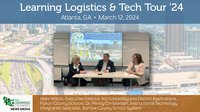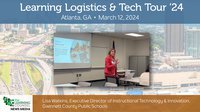Focused on providing education and experience in career fields, Boone County Schools’ Ignite Institute is creating a reality where industry and education work together to ensure that students have the skills and creativity to succeed in a fast-paced, technology-driven society.
Through project-based learning, students have authentic, real-world experiences that prepare them for the jobs of the future. This innovative educational approach requires unique physical space that includes flexible classroom spaces, furniture, and fixtures.
Offering six different career areas for schools to explore, the school opened for the 2019-20 school year with 890 students—a number that will reach 1,200 for the coming year. The school’s goal is to tap the potential of students who need help developing the presentation, communication, research, and collaboration skills needed to be able to show off their intelligence.
With six different career areas to choose from, Ignite scholars take all of their high school classes with a flavor of the career that they're interested in. For example, if students want to go into engineering, they have a team of six teachers that teach them English, math, science, social studies, world language, and a career class.
The school’s 180,000sf building was donated by Toyota and, working with grants and school board funding, was renovated into the Ignite Institute. Flexible furniture and other modular elements played an extremely important role during this process. Here’s how it worked:
- Involve all stakeholders (not just teachers and students). The school has approximately 42 teachers, and everyone was a part of the building process. Counselors, front office staff, and former teachers were all asked to provide input on the development of this unique school.
- Break out of the traditional classroom mindset. The classroom setup looks nothing like a traditional school. Some teachers prefer to be stationary, but for the most part the rooms are used for different things at different times of the day. It’s all flexible, depending on the activities that are taking place on that day.
- Design individual classrooms with modularity in mind. Sometimes the furniture is used in presentation formations and other times it’s used for group work, independent work, or a combination of both (in the same classroom). The classrooms and furniture both have to be able to accommodate these quick shifts.
- Align new architecture with flexibility. Going beyond the individual classroom, the school also created a cafeteria that doubles as an extension of its large meeting room, which we call “The Box.” They selected furniture that can be used for dining and for learning (when it’s set up as a classroom) or for presentations (when the school hosts large groups).
- Make sure everything is moveable. There are six different setups in the collaboration area, so six teachers can use the area at the same time. The furniture can be mixed and matched across the six different setups. Everything is moveable, including the walls, furniture, work surfaces, and other fixtures.
- Utilize different setups for different disciplines. When students are building robots in an engineering class, for example, teachers may want to push away all of the furniture and work in one, large open space. English classes, on the other hand, often need furniture moved into circles or pods to help stoke productive group discussions.
- Let teachers choose their preferred setups. Ignite may have one teacher who prefers to work with students sitting in a semicircle, and another likes a more traditional classroom setup. The school also has one professor who lets the students move the furniture around themselves. The flexibility of their furniture insures that regardless of what educational shifts take place, the school will always be able to serve the students’ needs.
Ignite chose furniture that put the students front and center in the conversation. After all, they’re the ones who have to use it every day.
About the author
Dr. Christina Counts, VP of Strategy and Development for MiEN Environments and Accredited Learning Environments Planner (ALEP), has worked in education for over 17 years with experience as a classroom teacher, district instructional leader, school administrator, and digital and innovative learning designer.











